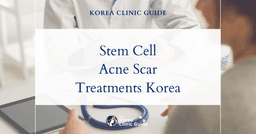Stem Cell Disease Therapy
Description
Stem cell disease therapy involves the use of stem cells to treat or prevent diseases and conditions by replacing damaged or dysfunctional cells with healthy ones. The process typically begins with the identification and extraction of the appropriate stem cells, which can be derived from various sources including bone marrow, adipose tissue, umbilical cord blood, or induced pluripotent stem cells (iPSCs). Once harvested, these cells are subjected to rigorous screening and processing to ensure they meet the required safety and efficacy standards. The cells are then cultured and potentially differentiated in vitro into the desired cell types that are needed for the specific treatment, such as neurons for neurological conditions, myocytes for heart diseases, or insulin-producing cells for diabetes. The next phase involves the transplantation or injection of these cultured stem cells into the patient's affected area or system. This can be done through various delivery methods depending on the condition being treated, including intravenous infusion, direct surgical implantation, or localized injection. Post-transplantation, patients are closely monitored for signs of cell integration, efficacy, and potential adverse reactions. Proper post-procedural care includes the administration of immunosuppressive drugs if necessary to prevent rejection, regular follow-ups, and possibly additional supportive therapies to enhance the therapeutic outcomes. The ultimate goal is for the transplanted stem cells to regenerate and repair damaged tissues, thereby restoring normal function and improving the patient’s overall health.
Ailments treated by this procedure: Autoimmune Disease Flare
Search
Related Posts




Top Stem Cell Disease Therapy Clinics
Cellinique Clinic
Apgujeong, Hak-dong Station
Free consultation from the clinic
Cellinique Clinic, located in the heart of Gangnam, Seoul, is a premier medical facility specializing in advanced stem cell and laser treatments aimed at rejuvenation, beauty, and overall health. The clinic offers a comprehensive range of procedures designed to enhance natural beauty and promote well-being. Stem Cell Treatments NovaStem: Utilizes concentrated autologous blood to activate aged cells and regenerate damaged tissues, restoring skin elasticity and health. Stem Cell Therapy: Employs the regenerative capabilities of stem cells to repair damaged tissues, enhance metabolic functions, and improve overall health. Aesthetic Procedures Radiesse: A collagen booster that stimulates the production of collagen and elastin, improving skin elasticity and reducing wrinkles. Juvelook: Enhances skin elasticity and volume by promoting tissue regeneration and inducing collagen and elastin production. Thread Lift: Involves inserting threads to lift and tighten sagging skin, providing a non-surgical facelift effect. Botox: Reduces the appearance of fine lines and wrinkles by temporarily paralyzing underlying muscles. Fillers: Injectable treatments that restore lost volume, smooth lines, and enhance facial contours. Laser Treatments Laser Lifting: Utilizes laser technology to lift and tighten the skin, reducing sagging and improving skin texture. Dual Toning: A laser treatment aimed at improving skin tone and texture by targeting pigmentation and promoting collagen production. LDM (Local Dynamic Micro-massage): Enhances skin elasticity and hydration through micro-massage, promoting overall skin health. Hair Restoration Non-Incision Hair Transplant: A minimally invasive procedure that transplants individual hair follicles without the need for incisions, resulting in a natural appearance. Stem Cell Hair Loss Injection: Uses stem cells to treat and prevent hair loss by stimulating hair follicle regeneration. Health Management Blood Purification (ABC BMT): A premium treatment that uses ultraviolet rays, magnetic fields, and ionized oxygen to cleanse and rejuvenate the blood, enhancing detoxification and immune function. Cellinique Clinic is dedicated to providing personalized consultations and customized treatments, ensuring each patient receives care tailored to their unique needs.
learn more
SH Clinic
Sinsa Station
Free consultation from the clinic
SH Clinic in Sinsa, Seoul is a multi-specialty center that combines stem-cell science, women’s healthcare, aesthetic dermatology, and modern plastic surgery under one roof. Stem Cell & Regenerative Medicine Stem Cell Hair Loss Treatment – Autologous stem cells are injected into the scalp to awaken dormant follicles and stimulate new growth. The method thickens existing strands without surgical grafting. BMAC Stem Cell Knee Injection – Concentrated bone-marrow cells are delivered into arthritic knees to calm inflammation and support cartilage repair. Patients experience reduced pain and steadier mobility. Women’s Health & Gynecologic Surgery Labiaplasty (Labia Minora Surgery) – Reshapes elongated or asymmetrical inner labia for improved comfort and aesthetics. The outpatient procedure is done under local anesthesia with swift recovery. Vaginoplasty – Tightens the vaginal canal by reinforcing muscular and fascial layers. Enhanced tone restores pelvic support and sensation after childbirth. Vaginal HIFU Rejuvenation – High-intensity focused ultrasound heats the vaginal wall to remodel collagen. One session boosts elasticity and relieves dryness without downtime. Cervical & Ovarian Cancer Screening – Pap smears, HPV testing, and ultrasound detect malignancies at early, treatable stages. Regular checks safeguard long-term reproductive health. Urinary Incontinence Treatment – Pelvic-floor therapy and office procedures address stress or urge leakage. Tailored plans restore daily confidence and comfort. Abortion Surgery – Physician-led termination performed in a monitored setting with thorough pre- and post-care counselling. Safety and patient autonomy remain paramount. Aesthetic Dermatology & Injectables Laser Lifting – Fractional and tightening lasers heat the dermis to contract collagen and lift sagging skin. Facial contours refine over weeks of natural remodeling. Skin Booster Injections – Micro-droplets of hyaluronic acid deeply hydrate the dermis and smooth fine lines. The result is a dewy, supple complexion with minimal downtime. Medical Skin Care – Physician-guided peels, facials, and prescriptions target acne, pigmentation, and photo-aging. Consistent sessions maintain clear, resilient skin. Botox – Botulinum toxin relaxes selected facial muscles to soften frown lines and crow’s-feet. Results appear within a week and endure for about three to four months. Dermal Fillers – Hyaluronic-acid gels restore volume to cheeks, lips, and tear-troughs. Immediate lift and contour last nine to eighteen months. Thread Lift – Biodegradable threads placed under the skin elevate sagging tissue and spark fresh collagen. The minimally invasive lift needs only brief recovery. Cosmetic Plastic Surgery Face Contouring Surgery – Precise bone reshaping of jaw, cheekbones, or chin improves facial balance. 3-D planning guides surgeons to natural-looking symmetry. Upper Blepharoplasty (Double-Eyelid Surgery) – Removes excess eyelid skin and fashions a defined crease, brightening the eyes and easing heaviness. Lower Blepharoplasty – Repositions or excises under-eye fat while tightening loose lower-lid skin, erasing puffiness and fine wrinkles. Facelift – Lifts and tightens deeper facial and neck layers for long-lasting rejuvenation. Incisions hide along hairlines and natural folds. Liposuction – Cannulas remove stubborn fat pockets from areas such as abdomen, thighs, and arms, refining body contours and jump-starting lifestyle change.
learn more
Lydian Plastic Surgery Clinic
Apgujeong Station
Free consultation from the clinic
Lydian Cosmetic Surgery & Dermatology Clinic, situated in the esteemed Cheongdam area of Gangnam in Seoul, is known for providing world-class liposuction and body sculpting procedures. The clinic's reputation as a leader in cosmetic surgery is anchored by the unparalleled expertise of Dr. An Kyung Chun. With over two decades of specialized experience in body sculpting, Dr. An is recognized as one of the premier practitioners globally, with a clientele that includes VIPs and celebrities. The clinic's dedicated focus and boutique approach, offering a singular specialist's care, ensure personalized attention and a commitment to excellence in cosmetic outcomes. As the epicenter of innovative cosmetic surgery techniques, Lydian Clinic stands out with its offering of advanced procedures such as 5D sculpting, aka high-definition liposuction (HD liposuction), a pioneering method developed by Dr. An. This state-of-the-art procedure is celebrated for its ability to remove significant fat deposits while minimizing scarring and eliminating the need for hospitalization, epitomizing the clinic's dedication to cutting-edge, minimally invasive techniques, going through a big surgery like liposuction without any visible scarring is not something you can expect from everywhere. Dr. An's extensive international experience, alongside his role as a clinical professor, reflects a depth of knowledge that benefits patients seeking various cosmetic enhancements, including BBL, Full face fat grafting, and transformative Stem cell therapy. Here's a brief explanation of each procedure offered at Lydian Plastic Surgery Clinic: Liposuction: A cosmetic surgery that removes fat from specific areas of the body that haven't responded well to diet and exercise. This can include the abdomen, hips, thighs, buttocks, arms, or neck. 5D Liposculpture: An advanced form of liposuction that goes beyond traditional fat removal to sculpt the body into a more desired shape. It focuses on more detailed aspects of fat removal and transferring, aiming to enhance the body's natural contours. Tummy Tuck (Abdominoplasty): A surgical procedure designed to remove excess skin and fat from the abdominal area and tighten the muscles of the abdominal wall. It is often sought by patients who have sagging tissues after pregnancy or significant weight loss. Stem Cell Fat Grafting: This is a combination procedure where fat is harvested from one part of the body (through liposuction), enriched with stem cells, and then re-injected into areas requiring volume enhancement, such as the face, breasts, or buttocks. Brazilian Butt Lift (BBL): A popular cosmetic procedure that involves the transfer of fat to help create more fullness in your backside. It includes fat grafting with the patient's own fat to increase the size and enhance the shape of the buttocks. Breast Reduction: Also known as reduction mammaplasty, this procedure removes excess breast fat, glandular tissue, and skin to achieve a breast size in proportion with your body and to alleviate the discomfort associated with overly large breasts. Face Lifting: A cosmetic surgical procedure aimed at creating a more youthful facial appearance. It typically involves the removal of excess facial skin, with or without the tightening of underlying tissues, and the re-draping of the skin on the patient's face and neck. Stem Cell Therapy: A regenerative medicine therapy that utilizes stem cells to repair diseased, dysfunctional, or injured tissue. In cosmetic surgery, it can be used for facial rejuvenation, enhancing healing in fat grafting procedures, or in other regenerative medicine applications to promote healing and tissue regeneration. Choosing Lydian Clinic means opting for an unparalleled cosmetic experience that encompasses not just physical transformation but also a promise of exceptional care and satisfaction. Prospective patients can look forward to a VIP treatment while exploring a range of services tailored to enhance aesthetic appearance confidently. From 5D body sculpting on various body parts to the artistic finesse in procedures like tummy tucks and targeted liposuction, the clinic's commitment to invisible scarring and superior results is evident. Those seeking to refine their appearance, whether for daily elegance or special occasions, will find Lydian Clinic's expertise and the promise of a beautiful outcome as an ideal choice for cosmetic surgery needs.
learn more
THEPLUS Plastic Surgery
Sinsa Station
Free consultation from the clinic
THE PLUS Plastic Surgery clinic, nestled in the bustling Garosu-gil area of Gangnam, Seoul, epitomizes the pinnacle of world-class plastic surgery. The clinic spans four floors specifically designed to accommodate a full spectrum of services, from initial consultation through surgery and post-operative skincare. Surgeons at THE PLUS are not only practitioners but also eminent medical researchers, regularly contributing to scholarly journals and books that echo their clinical prowess. Their participation in numerous domestic and international medical symposiums showcases their commitment to staying at the forefront of cosmetic surgery advancements. This dedication to excellence and personalized patient communication is at the core of their philosophy, ensuring a superior level of medical service. Distinguished for their expertise in a range of procedures, THE PLUS Plastic Surgery specializes in rhinoplasty, revision rhinoplasty, facial contouring, with their extensive experience in rhinoplasty earning them a preeminent reputation. The clinic's director doctors, Dr. Jeong Jae Yong and Dr. Kim Taek Kyun, are venerated figures in the plastic surgery industry, recognized both in Korea and internationally for their work. Their ongoing pursuit of knowledge through webinars, despite global challenges like the COVID-19 pandemic, underscores their dedication to the continuous advancement of the plastic surgery field. Through their educational outreach, they strive to elevate the industry standard and share their expansive expertise with fellow surgeons. Safety and patient satisfaction are the cornerstones of THE PLUS Plastic Surgery, facilitated by a team of highly experienced professionals exceeding a decade in practice. With active participation in academic research and various medical societies, including the American Society of Plastic Surgeons, the clinic's surgeons are widely sought after for presentations and live surgeries around the globe. Both Dr. Kim, an authority in rhinoplasty and facial bone surgery, and Dr. Jeong, a specialist in rhinoplasty revisions, have authored significant contributions to the field, with Dr. Kim's seminal work, "Rebuilding Nose," serving as an essential reference for rhinoplasty professionals. For anyone considering advanced cosmetic procedures, especially revision rhinoplasty, THE PLUS Plastic Surgery stands as a highly recommended choice, promising exceptional results through the hands of skilled, esteemed surgeons. At THE PLUS in Gangnam, various cosmetic and dermatological procedures are offered, including: Face Contouring: Full Face Contouring: A comprehensive approach to reshape and balance the facial structure for a more harmonious appearance. Cheekbone Surgery: Surgical reduction or reshaping of the cheekbones to enhance facial proportions. Square Jaw Surgery: A procedure aimed at softening an overly pronounced square jawline for a more feminine or softer appearance. Vline Surgery: Refines the jawline and chin to create a sleeker, more V-shaped facial contour. Facial Implant: The placement of implants in areas like the chin, cheeks, or jaw to add volume and definition. Rhinoplasty: Low Nose: Elevating the bridge of the nose to enhance facial balance. Short Nose: Lengthening procedures to address a nose that appears too short for the face. Droopy Nose: Correcting a downward-tilting nasal tip to achieve a more aesthetically pleasing angle. Hawk Nose: Smoothing out a prominent nasal bridge, often referred to as a "Roman nose." Deviated Nose and Septal Deviation: Correcting the nasal septum and external nose for improved aesthetics and function. Big Nose: Reducing the overall size to better fit facial proportions. Bulbous Nose: Refining the tip of the nose to a more defined shape. Wide Nose Alar Reduction: Narrowing the width of the nose through alar base reduction techniques. Men’s Nose Contour: Tailored rhinoplasty focusing on masculine aesthetic goals. Nostril & Nasal Wing (Alar Retraction) Correction: Adjusting the nostrils and sides of the nose for symmetry and proportion. Open & Closed Method: Techniques for rhinoplasty, either with external incision (open) or internal incisions (closed). Rhinitis & Sinusitis: Surgical and non-surgical options to treat nasal inflammation and sinus conditions. Non-Implant Rhinoplasty: Rhinoplasty without the use of synthetic implants, possibly using the patient's own tissue. Implant Rhinoplasty: Using synthetic or biological implants to enhance the nasal structure. Breast Surgery: Breast Implant: Enhancement of breast size and shape using implants. Motiva Breast Implant: Utilizing Motiva implants, known for their safety and natural feel. Eye Surgery: Double Eyelid Surgery: Creating a crease in the eyelid where one does not naturally exist to open up the eye appearance. Ptosis Correction: Surgical repair of drooping eyelids for improved vision and aesthetics. Canthoplasty: Reshaping the outer corner of the eye, often for a more almond-shaped appearance. Blepharoplasty: Removing excess skin, muscle, and sometimes fat from the eyelids to rejuvenate eye appearance. Face Lift: Face Lift: Surgical procedure to lift and tighten facial tissues for a more youthful appearance. Thread Lift: A minimally invasive procedure using threads to lift and tighten the skin. Face Fat Grafting: Transferring fat from one part of the body to the face to restore lost volume. Dermatology: Fillers: Injectable treatments to restore volume and smooth out wrinkles or folds. Botox: Injections that relax facial muscles to reduce the appearance of lines and wrinkles. Pigmentation: Treatments to address skin discoloration issues such as freckles, age spots, and melasma. Acne Scar Treatment: Various procedures to reduce the appearance of scars left by acne. Whitening: Treatments aimed at lightening the skin for a more even complexion. O2toderm Skin Care: A specific skin care treatment that uses oxygen for rejuvenating effects. Duo Skin Lifting: A treatment combining two modalities to achieve tighter, more youthful-looking skin. Liposuction: A surgical procedure that removes excess fat from specific areas of the body, aiming to reshape and contour the figure.
learn more
Chaum
Gangnam-gu Office, Apgujeong Rodeo Station
Free consultation from the clinic
Enjoy the peace and quiet of your own private check-up room where our medical specialists and equipment come to you. At Chaum, we provide a variety of personalized health care programs designed to cultivate excellent health and maintain youthfulness while treating diseases. Conveniently located at Sinnonhyeon Station, Chaum offers a range of specialized medical procedures. Health Check-up Comprehensive Health Check-ups: Our comprehensive health check-ups include a complete evaluation of your physical condition using advanced diagnostic equipment and specialist consultations. These check-ups help in early detection of diseases and provide a customized health management plan. Cancer Screening: We offer specialized cancer screening programs that include advanced imaging and laboratory tests to detect various types of cancers at an early stage. Early detection significantly increases the chances of successful treatment. Anti-aging Stem Cell Therapy: Our stem cell therapy aims to rejuvenate and repair damaged tissues, promoting overall wellness and slowing the aging process. This procedure involves the use of stem cells to regenerate tissues and improve organ function. Hormone Replacement Therapy (HRT): HRT is designed to balance hormone levels that decline with age, alleviating symptoms such as fatigue, mood swings, and decreased libido. It helps in maintaining energy, vitality, and overall well-being. Outpatient General Medicine: Our outpatient clinic offers consultations and treatments for various medical conditions. Patients can meet with specialized doctors for personalized care plans and follow-up treatments. Pain Management: This clinic focuses on diagnosing and treating chronic pain conditions using a multidisciplinary approach. Treatments may include medication, physical therapy, and minimally invasive procedures to alleviate pain and improve quality of life. Dermatology and Plastic Surgery Skin Rejuvenation: We provide a range of skin rejuvenation treatments, including laser therapy, microdermabrasion, and chemical peels. These procedures aim to improve skin texture, tone, and overall appearance. Cosmetic Surgery: Our plastic surgery services offer procedures such as facelifts, rhinoplasty, and liposuction. These surgical interventions are designed to enhance physical appearance and boost self-confidence. Wellness and Fitness TheraSpa: TheraSpa offers therapeutic spa treatments to relax and rejuvenate the body. Services include massages, aromatherapy, and hydrotherapy, which promote relaxation and stress relief. Benefit Center (Fitness): Our fitness center provides personalized fitness programs tailored to individual health needs and fitness levels. The center is equipped with state-of-the-art facilities and professional trainers to help you achieve your fitness goals. Chaum’s numerous awards are a testament to our dedication to medical excellence and innovation in health care and wellness.
learn more
Geurim Plastic Surgery
Sinsa Station
Free consultation from the clinic
The procedures offered at Geurim Clinic in Gangnam are diverse, addressing various aesthetic and reconstructive concerns. Below are the procedures categorized for easier understanding: Specialized Procedures Cleft Lip Surgery and Cleft Palate Surgery: Repairs congenital anomalies of the lip and palate. Foreign Body Removal: Extracts foreign objects embedded within the body. Hair Transplant on Scar: Masks scar tissue by transplanting hair to the scarred area. Stem Cell Acne Scar and Stem Cell Disease Therapy: Utilizes stem cells for the treatment of acne scars and potential disease therapy. Lip and Smile Adjustments Gummy Smile Surgery: Adjusts the gum line to minimize gum visibility when smiling. Bullhorn-Lip-Lift: Elevates the upper lip to enhance the smile and reduce the philtrum length. Philtrum Reduction Surgery: Shortens the philtrum for improved facial proportions. Facial Contouring and Enhancement Forehead Reduction: Reduces the size of the forehead for aesthetic enhancement. Nasolabial Angle Adjustment: Modifies the angle between the nose and the upper lip to improve facial harmony. Cheiloplasty: Reshapes the lips for improved appearance and functionality. Masseter Reduction: Slims the jawline by reducing the size of the masseter muscle. Buccal Fat Removal: Contours the face by removing buccal fat pads. Double Jaw Surgery: Corrects and aligns the upper and lower jaws for improved function and aesthetics. Facial Asymmetry Correction: Achieves a more balanced facial appearance by correcting asymmetrical features. Paranasal Implant: Enhances the area around the nose for a more pleasing aesthetic look. Hair Treatments Hairline Correction: Adjusts the hairline's position, often lowering it for aesthetic purposes. Hair Transplant: Transfers hair to the scalp to address baldness or thinning areas. Eye and Eyebrow Enhancements Ptosis Correction: Corrects drooping of the upper eyelids. Canthoplasty: Modifies the outer corner of the eye for an aesthetic enhancement. Double Eyelid Surgery: Creates or enhances the fold in the upper eyelids. Eyebrow Lift: Raises the eyebrows for a youthful and alert appearance. Nasal Corrections and Enhancements Revision Rhinoplasty: Corrective nasal surgery following an initial rhinoplasty. Septoplasty: Straightens a deviated septum to improve breathing. Nose Osteotomy: Reshapes the nose through surgical modification of the nasal bones. Tip Plasty: Refines and defines the nasal tip. Scar and Skin Treatments Atrophic Scar Treatment: Aims to level depressed scars with the surrounding skin. Acne Scar Treatment: Targets scars left by acne with various treatment options. Burn Scar Treatment: Reduces the visibility of scars caused by burns. Keloid Removal: Excises keloid scars, which are thick, puckered, itchy clusters of scar tissue. Scar Revision Surgery: Enhances the appearance or reduces the visibility of scars. These procedures represent a broad spectrum of cosmetic and reconstructive options available to patients, focusing on both aesthetic improvement and functional restoration.
learn more






